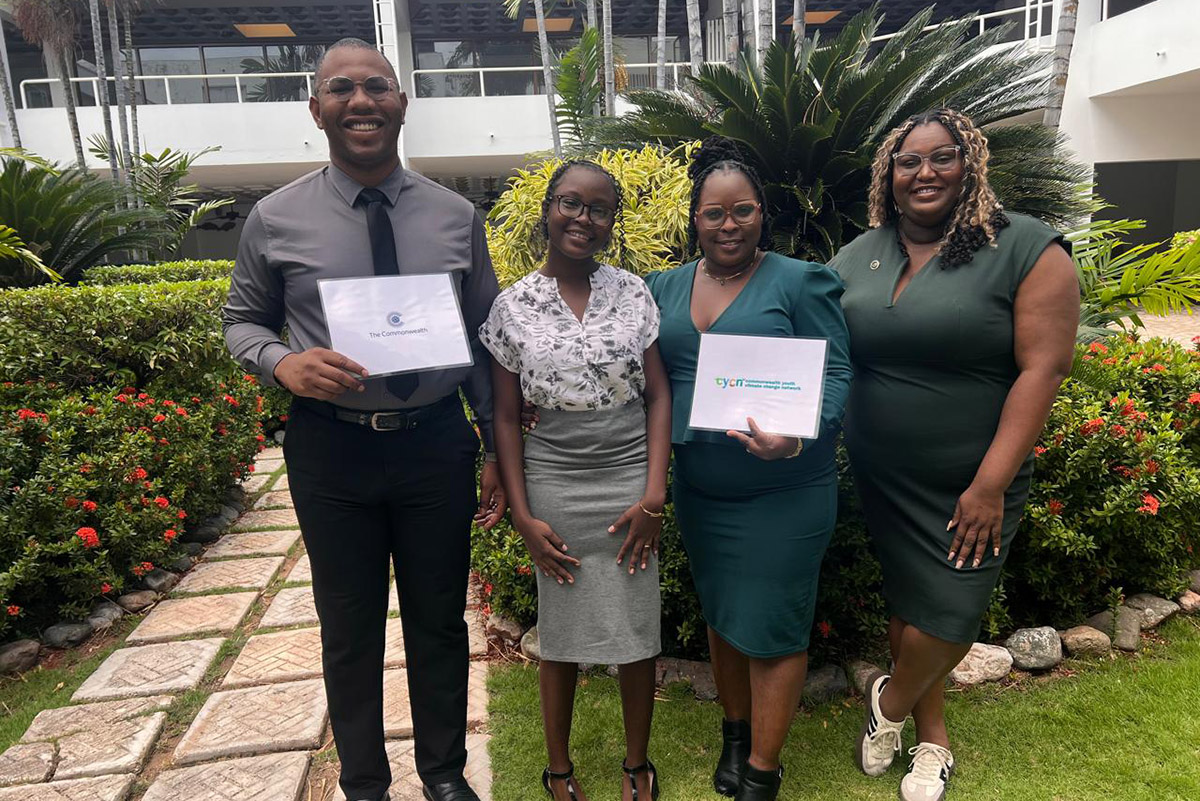The Space In-Between: How Youth Work Changes People and Communities
November 13by Keerthana Anand, CAYA Advocacy Fellow
Youth work is more important than ever as our world rapidly evolves. The 5th Global Youth Work Conference from 17-19 November in Malaysia will bring together youth workers, practitioners, academics and policymakers to explore how local wisdom can shape globally connected, future-ready youth work. In this piece, Keerthana Anand, Commonwealth Asia Youth Alliance (CAYA) Advocacy Fellow shares his journey in youth work and inspiring change.
As young people, we are often told that our generation doesn’t understand the struggles of those before us. It’s a common misconception, if you ask me, because from what I’ve seen, young people have always been at the forefront of reform. It is because of the young people I’ve seen champion change that I began my own journey in social impact. My encounters with youth work have been multi-phased, each shaping my understanding of what it means to create change from the ground up.

My first encounter with youth work came when I was fifteen. It wasn’t through large organisations or established collectives, but through a small group of young people who came together with nothing more than determination and a shared dream of a better world. At the peak of the COVID-19 pandemic, I witnessed how grit, empathy, and hope could translate into real change. We were just teenagers, yet we mobilised, volunteered, and supported families in our neighbourhoods when it mattered most. That experience gave me one of the most powerful lessons of my life: You are never too young to make an impact.
As I grew, my perspective on youth work evolved. It wasn’t just witnessing other young people in action that changed my worldview, but also the moments when I found myself in a position to influence the lives of others. Youth work doesn’t just transform one person’s life, it equips them to make the world a better place. What drives that transformation, I’ve come to realise, is hope. There’s a quote that has always stayed with me: ‘We must hate the world enough to want to change it, but love the world enough to think it’s worth changing.’ To me, that captures the essence of youth work: believing deeply that a better world is possible and caring enough to act on that belief.
My second encounter with youth work took me into the heart of a low-income community in my city, a place that, ironically, bordered one of its wealthiest neighbourhoods. This striking duality is something many Asian metropolitan cities share, reflecting both economic vibrancy and inequality. Those streets taught me more than any classroom ever could. They reaffirmed my faith in another defining aspect of Asian culture: fraternity.
I had initially visited to conduct a regional demographic survey, but what began as data collection soon became something much deeper. I started having real conversations with residents about their daily lives, challenges, and aspirations. Over time, they came to know me by name; they greeted me on the streets and welcomed me into their homes. I wasn’t just a visitor anymore: I was part of their story. That experience revealed another truth about youth work: it opens your eyes to the corners of your community that you might otherwise overlook. It roots empathy in understanding, not sympathy.
Through these interactions, I identified a significant gap in the community: the absence of financial literacy. Many people didn’t know how to open a bank account or protect themselves from scams. This discovery led to my third and perhaps most formative encounter with youth work, one where I moved from observation to action.
With the support of my team at the Global Shapers Community – Chennai Hub, I led a project to tackle this issue at its roots. We translated and regionally adapted a children’s book, Meena and the Secret of Savings, into Tamil, making financial literacy accessible to young children and their families. Our goal was simple yet powerful: to empower the next generation through knowledge. The project’s success exceeded our expectations, parents reported visible behavioural changes, and our post-project assessment showed an 80% increase in financial literacy. For the first time, I truly felt the tangible power of youth work. We hadn’t just taught financial concepts; we had sparked empowerment.
Another encounter with youth work came when I realised that making a difference myself wasn’t enough; I wanted to inspire other young people to do the same. Through the Commonwealth Asia Youth Alliance Advocacy Fellowship, I had the opportunity to engage directly with youth in my community, sharing the tools and confidence they needed to take action. During one workshop, over sixty young women attended, most of them stepping into such a space for the first time. By the end of the session, many shared that they felt a renewed sense of purpose, that they, too, could make a difference. In that moment, I understood how youth work multiplies impact: one inspired person can ignite a hundred more.
Looking back, I see how these experiences, from being inspired by youths in action to supporting a community to mentoring others, have come together to define my understanding of youth work. It is not a one-time intervention; it’s a cycle of empowerment. Youth work creates a ripple effect that begins with one act of hope and extends across generations.
It is not a single intervention; it is a cycle of empowerment that creates a ripple effect across generations. Investing in youth work is essential for sustainable development, as it helps young people find their voice, recognize their worth, and believe in their ability to shape the world around them. It nurtures the courage to care and the conviction that change is possible.




